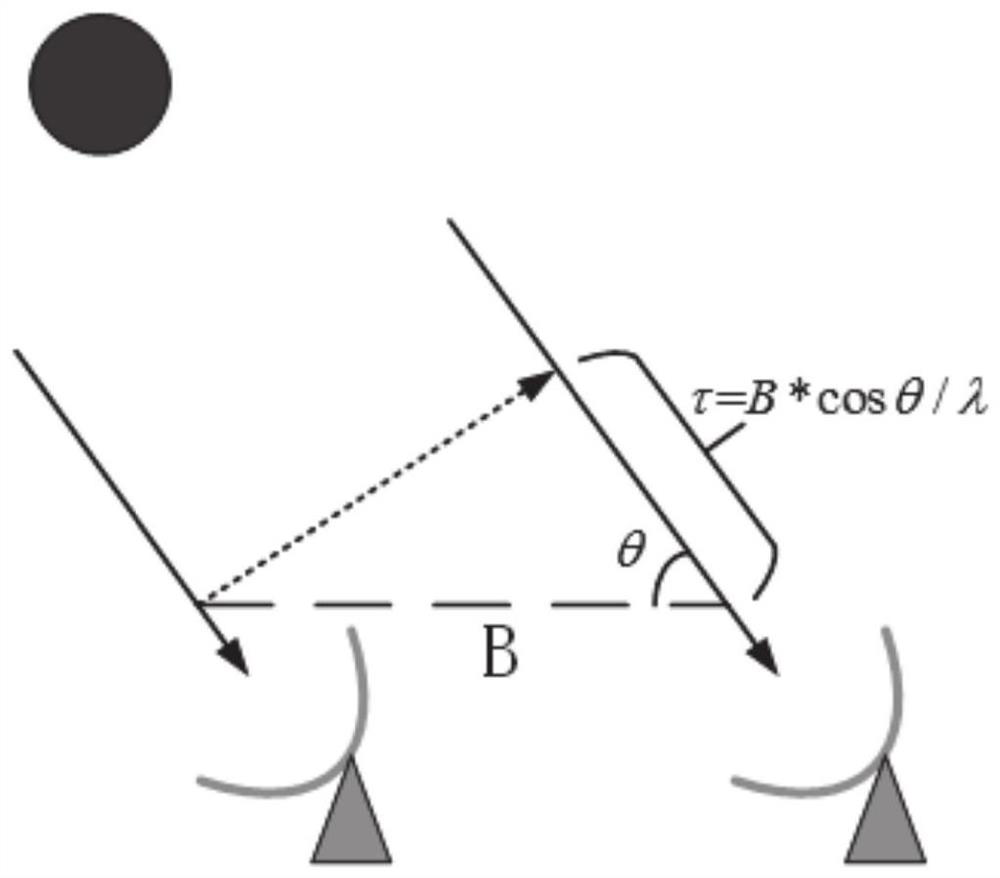A solar radio observation instrument, system and method
A technology for solar radio and observation instruments, applied in the field of solar radio observation, can solve problems such as weak interference suppression capability, complex structure, and many computing units, and achieve the effects of reducing FPGA resource consumption, improving sensitivity, and saving costs
- Summary
- Abstract
- Description
- Claims
- Application Information
AI Technical Summary
Problems solved by technology
Method used
Image
Examples
Embodiment 1
[0032] At present, the solar radio 15-40GHz observation scheme adopts the superheterodyne frequency conversion sampling processing structure, such as figure 1 As shown in Fig. 1, the sensitivity is low and the ability to suppress interference is weak, so on the basis of conventional broadband solar radio spectrum observation, an additional two-element coherent observation equipment is built. The output spectrum and radiation intensity of the element interference can be complementary to the conventional full-frequency observation to form data, wherein the additionally built two-element coherent observation equipment is a solar radio observation instrument disclosed in this embodiment, such as figure 2 shown, including:
[0033] Two antennas, each antenna is connected to the main antenna circuit through a coupler, both the main antenna circuits are connected to the digital receiver, the two couplers are connected to the digital receiver through the amplitude calibration unit an...
Embodiment 2
[0054] In this embodiment, a solar radio observation system is disclosed, including a conventional spectrum observer connected by a single antenna, an antenna main circuit and a digital receiver, and a solar radio observation instrument disclosed in Embodiment 1.
[0055] Among them, the structure of the conventional spectrum observer is as follows figure 1 As shown, the main circuit structure of the antenna of a conventional spectrum observer is the same as that of a solar radio observation instrument, including amplifier I, filter I, mixer I, amplifier II, filter II, Mixer II, filter III, amplifier III and filter IV, amplifier I is connected with the coupler, and filter IV is connected with the digital receiver.
[0056] A solar radio observation system disclosed in this embodiment performs coherent observation on several points in the broadband observation while using conventional observation, such as figure 2 As shown, a single turntable and two antennas are used to perf...
Embodiment 3
[0058] In this embodiment, a solar radio observation method is disclosed, using a solar radio observation instrument disclosed in Embodiment 1, including:
[0059] Receive solar radio signals through two antennas respectively;
[0060] The two solar radio signals are sent to the digital receiver through the main antenna of the antenna to form two time-domain data;
[0061] Send the two time domain data to the host computer, and the host computer calculates the time domain delay of the two time domain data;
[0062] The time-domain delay is sent to the digital receiver to perform delay compensation on the two time-domain data.
[0063] Further, it also includes amplitude calibration. During the amplitude calibration, the digital receiver receives the amplitude calibration instruction sent by the upper computer, and controls the amplitude calibration unit to inject the amplitude calibration signal into the two antenna main circuits through the coupler, and the amplitude calibra...
PUM
 Login to View More
Login to View More Abstract
Description
Claims
Application Information
 Login to View More
Login to View More - R&D
- Intellectual Property
- Life Sciences
- Materials
- Tech Scout
- Unparalleled Data Quality
- Higher Quality Content
- 60% Fewer Hallucinations
Browse by: Latest US Patents, China's latest patents, Technical Efficacy Thesaurus, Application Domain, Technology Topic, Popular Technical Reports.
© 2025 PatSnap. All rights reserved.Legal|Privacy policy|Modern Slavery Act Transparency Statement|Sitemap|About US| Contact US: help@patsnap.com



